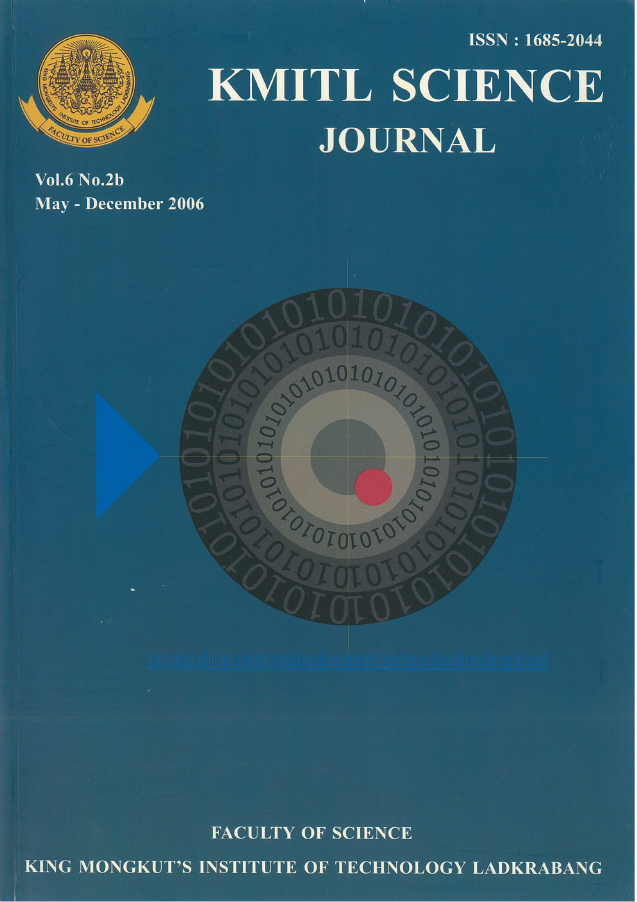High Efficiency of Transfection Agents Using Bio-Compatable PH Cleavable Linkers
Main Article Content
Abstract
Transfection agents were synthesis using solid phase chemistry and utilizing a pH cleavable linker. These compounds are based on 3-Amino-1, 2-propanediol and polyamine conjugate (spermine) to a steroid or bile acids. To optimize the transfection efficiency a series of structure-activity relationship studies were carried out by altering the steroid or fatty acid by systematic variation of the acid chain length. We demonstrate that transfection activity of our compound formulated with DOPE as a co lipid is comparable with commercial available, DC-Chol, transfectam, DOTAP and ESCORTTM respectively. This result suggests our bile acid based cationic lipid is more effective than those commercially available. The most potent compound was N1-(3α,7α-dihydroxy-5β-cholan-24-carbonyl)-1,12-diamino-4,9-diazadecane.
Keywords: Transfection agents, gene therapy, solid phase chemistry, safety-catch linker, pH cleavable linker, liposome, pEGFPLuc plasmid DNA.
Corresponding author: E-mail: b_chitkul@yahoo.com
Article Details
Copyright Transfer Statement
The copyright of this article is transferred to Current Applied Science and Technology journal with effect if and when the article is accepted for publication. The copyright transfer covers the exclusive right to reproduce and distribute the article, including reprints, translations, photographic reproductions, electronic form (offline, online) or any other reproductions of similar nature.
The author warrants that this contribution is original and that he/she has full power to make this grant. The author signs for and accepts responsibility for releasing this material on behalf of any and all co-authors.
Here is the link for download: Copyright transfer form.pdf
References
[2] Crystal R.G., McElvancy, N. G., Rosenfeld, M.A., Chu, C.S., Mastrangeli A.; Hey, J.G., Brody, S.L.; Jaffe, H.A., Eissa, N.T., Danel, C., Nat. Genet., 1994, 8, 42-51. Mulligan, R.C., Science, 1993, 260, 926-931. Crystal, R. G., Science, 1995, 270, 404-410.
[3] Zabner, J., Fasbender, A.D., Moninger, T., Poellinger, K.A., Welsh, M.J., J. Biol. Chem., 1995, 70, 18997-19007.
[4] Escriou, V., Ciolina, C., Lacroix, F., Byk, G., Scherman, D.; Wies, P., Biochim. Biophs.. Acta, 1998, 1368, 276-288.
[5] Byk, G., Wetzer, B., Frederic, M., Dubertret, C., Pitard, B., Jaslin, B., Scherman, D., J. Med. Chem., 2000, 43, 4377-4387.
[6] Chitkul, B., Bradley, M. Optimsing Inhibitors of Trypanothione Reductase Using Solid-phase Chemistry. Bioorg. Med. Cem. Lett., 2000, 10, 2367-2369.
[7] Chitkul, B., Atrash, B., Bradley, M. A New Bio-compatible pH Cleavable Linker for Solid-phase Synthesis of a Squalamine Analogue. Tetrahedron Lett., 2001, 42, 6211-6214.
[8] Blagbrough, I. S., Al-Hadithi, D., Geall, A. J., Tetrahedron, 2000, 56, 3439-3447. Geall, A. J., Tayler, R. J., Earll, M. K., Eaton, M. A. W., Blagbrough, I. S., Bioconjugate Chem., 2000, 11, 314-326.
[9] Machesky, L. Basic RNA and DNA protocol, Harwood, A., Ed., Humana press Inc., Vol. 58, pp 269-271.
[10] Denizot, F., Lang, R., Rapid Colorimetric Assay for Cell Growth and Survival: Modifications to the Tetrazolium Dye Procedue Giving Improved sensitivity and Reliability. J. Immunol. Methods, 1986, 89, 271-277.
[11] Farhood, H., Serbina, N., Huang, L. Biochem. Biophys. Acta 1995, 1235, 289-295; Zelphati, O.; Szoka Jr., F.C. Pharm, Res. 1996, 13, 1367-1372; Friend, D.S.; Papahadjopoulos, D.; Debs, R.J. Biochem. Biophys. Acta 1996, 1278, 41-50.


